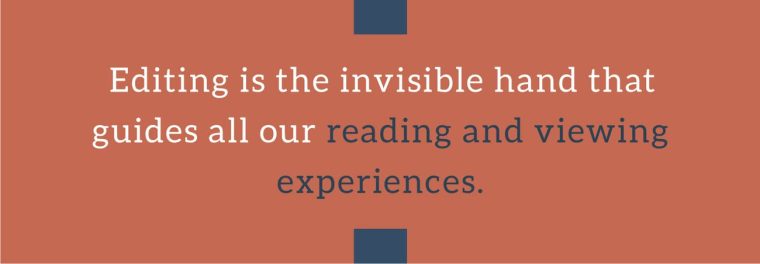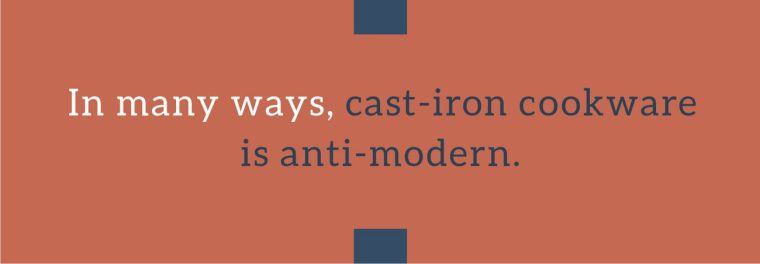I’ll start today’s edition of Eating to 100 by letting you in on a little secret.
It’s nothing shocking—but still, this way we can start the conversation on honest footing.
One of the big “selling points” of my books is the photography by David McLain (and others, though it’s mostly David). He’s a tremendous talent and his photos do so much to bring the stories and the food to life—but even better, he also has an eye for capturing the moment, without any posing or scripting or staging, and so that’s what you see in his work.
Having said that…

My books are not exceptions to this.
Perhaps the most central question in editing is “what stays and what goes.” Like any photographer would, David took a LOT more pictures than what you see in my books and on my feeds—and over time, it’s become clearer that we’ve leaned on certain kinds of imagery a bit more than others.
One broad example is outdoor food photography. It checks a whole lot of different boxes: it usually provides the best lighting, there’s a lot more green in the imagery, it feels more tactile and alive than an indoor setting, and so on. As I said, it’s not staged that way, but we’re definitely happy to shoot it that way—and the resulting photos have an above-average chance of getting used (in or out of a book) because, in any kind of media production, you tend to edit in favor of things people like to see.
I bother to explain this “secret” precisely because it’s something that people already know, and because it can create some nagging doubts about the authenticity of the things you see. With any cookbook, for instance, you might wonder whether that’s really anybody’s home kitchen, or how many tries it took to get the food you’re seeing in each picture (and what happened to all the tries they didn’t photograph).
Some details invite more skepticism than others. Broadly speaking, we tend to assume that anything unsightly is authentic and anything photogenic might not be (note that chef David Chang has a Netflix show called Ugly Delicious).
So I sometimes wonder if David McLain’s work, as real and glorious as it is, might also cast a darker shadow of doubt. So many of our cooking shoots involve photo-friendly tools and techniques not seen in the average kitchen…
… and cast-iron cookware is one of the best examples I can name.
You can understand why cast iron makes for good photos: it’s visibly old-timey, it’s got a lot of texture, and the fact that it’s usually jet-black makes for a nice contrast with a lot of foods.
Then again, those same details might lead you to conclude that cast iron was a staging decision—and especially in light of cast iron’s difficulties, you might think that people don’t really cook with cast iron unless they’re (A) hipsters who want to look cool or (B) people who are hardcore in ways you don’t understand.
Rest assured: no matter how old-fashioned the cooking setups we’ve photographed (like cast iron over a wood fire), none of it is for show. For all the disadvantages these ways of cooking present, they persist to this day partly because of tradition, but also because they have real, practical advantages in terms of how they cook the food.
So, on the topic of cast-iron cookware, let’s start by answering a frequently-asked question: why in the world are people still using it?

Cast iron is one of the world’s oldest materials for cookware, and it’s coming back into fashion in recent years (though, among serious cooks, it never left).
The appeal might be lost on you. If you just don’t get it, that’s pretty normal.

It’s really heavy, it doesn’t heat up very quickly, it doesn’t usually have heat-proof handles, and there’s a whole arcane science (or so people hear) to maintaining the “seasoning” that keeps everything from sticking to the iron.
Also, cast iron rusts if you leave it in the sink. Not the most popular feature.
So, again, I can understand if you’ve wondered why in the world people like cast-iron cookware. But I’ll start by confirming what you might have suspected: that cast iron does have some advantages to compensate for those disadvantages.
Actually, if I’m keeping things simple, cast iron has one big advantage: heat management, in a phrase. This advantage manifests in a few different ways while you’re cooking, but I’ll start with the basic “heat science” of cookware and work my way forward to cast iron specifically.
When it comes to cookware’s ability to manage heat, there are three different properties we might want:
Conductivity is a material’s ability to transfer heat from one part of itself to another. Imagine yourself holding a small sheet of metal over a candle flame; a highly conductive metal would get hot at the edges (where you’re holding it) a lot faster than a non-conductive metal.
Capacity is the amount of heat energy that a material can hold. This measurement is a little more abstract than just how hot something can get or how long it’ll stay hot; we don’t experience joules or BTUs (units of heat energy) like we experience degrees Fahrenheit or minutes. Still, you understand the general idea of “capacity,” so we’re good here.
Emissivity is the rate at which a material radiates its stored heat through the air, away from itself. A non-emissive material could be very, very hot and you’d still have to get really close to feel the heat, whereas a highly emissive material will radiate its heat generously and you might feel the burn from some distance away.
First big question: why is each of these properties desirable for cookware?
- Heat conductivity is desirable for cookware because it helps to cook everything evenly. You don’t want some parts of the pan colder than others—and that’s a very real possibility when your heat source (e.g. gas burner) is usually a different size than your pan.
- Heat capacity is desirable for cookware because you want to be able to keep the pan hot, even as you add ingredients. Remember that ALL ingredients are cold relative to a hot pan, and the more ingredients you add, the more heat the pan has to start giving up. The flame beneath the pan keeps the heat coming, of course—but the lower the cookware’s heat capacity, the more precipitously its temperature drops when you add ingredients, and this can make it hard to cook things properly.
- Heat emissivity is desirable for cookware because you want the pan to give off the heat it’s holding. The lower the heat emissivity, the more you have to turn, mix, and monitor the food for it to cook all the way through.
Now the second question: with these properties in mind, how does cast iron (cookware) compare to modern materials like steel and aluminum?
Short answer: cast iron is the opposite of modern materials, but in useful ways.
Nowadays, home cooks care most about heat conductivity, and for good reason: it’s the property that does the most to ensure that the food cooks evenly. Second in their priorities is heat capacity because, no matter how even the heat, you still don’t want it to plummet too fast when you add ingredients. Last in the priorities, we have emissivity, because time has shown that you don’t need much of it to cook tasty things.
Not coincidentally, this is also the order of priorities for aluminum and steel cookware, and the tradeoff between those two is essentially conductivity vs. capacity (aluminum excels in the former, steel is more of a compromise).
Cast iron turns that usual order of priorities upside down. Contrary to popular belief, cast iron is actually NOT very conductive—certainly not compared to aluminum or steel—but in exchange, it stores a ton of heat AND it emits that heat much more generously than aluminum or steel ever could.
According to this handy myth-busting article from Serious Eats, cast iron has an emissivity rating of 0.64 compared to stainless steel’s 0.07. This effectively means that a steel pan can only cook the things it can touch, whereas everything in a cast-iron pan feels the heat like you’d feel it standing beside a roaring campfire.
? Why would you want a pan that holds and emits a lot of heat, but doesn’t spread it around evenly?
Basically, because that’s the only arrangement whose disadvantages you can offset. Cast iron isn’t very conductive, but there are ways of making the heat more even, like moving the pan around the burner or heating it in the oven before starting to cook. By contrast, you can’t compensate for the disadvantages of aluminum and steel; there’s almost nothing you can do to increase their heat capacity or emissivity.
In the hands of a knowledgeable user, cast-iron cookware can excel in all three heat-management properties (or at least excel in two and function in the other) like no other cookware can. That’s why, even after thousands of years, cast iron hasn’t become obsolete in the kitchen.
Like I said before, cast iron is anti-modern in many ways, and the extra care required is frankly a deal-breaker for many home cooks. But if you’re even slightly intrigued, I’ll close with two pieces of good news about getting started with cast iron:
- The main takeaway of the Serious Eats myth-busting piece (which I heartily recommend) is that cast-iron cookware isn’t nearly as delicate and difficult as a lot of people assume. There are extra complications, like maintaining the layer of “seasoning” on the iron, but you can get those right even as a novice.
- Serious Eats also tested 22 cast-iron skillets and recommended their favorites, one of which is the same 10-inch Lodge model that you can buy just about anywhere for $20 or so. It’s cheap to get started because this is low-tech stuff, and by design.

We spend a lot of time talking about food in this newsletter… but what about drinks? After all, some of the biggest nutritional hazards are beverages, not foods per se.
I want to talk specifically about soda pop.* It’s one of the mainstays of the Standard American Diet (SAD), and also one of the biggest reasons that the SAD is sad. Today, I want to examine what makes soda pop bad for us and help you to distinguish the safer options from the more hazardous ones.
*Soda pop, by the way, is what I grew up calling it. Everyone knows what I’m referring to, but we all call it different things—so here’s a fun little map of what Americans call the beverage by region.
There’s an irony to soda pop, otherwise known as “soft drinks.” Soft drinks were originally considered a harmless, child-friendly alternative to hard (alcoholic) drinks—and yet, when you examine the beverage choices of the world’s longest-lived people, most of them barely even acknowledge that soft drinks exist. They stick to their hard drinks, one in particular: red wine, usually a glass a day.
Also, lots of water and coffee and tea. But not a drop of soda pop.
I know I’m hitting a lot of you where it hurts, so I’ll start with what’s NOT bad about soda pop: the carbonation. Science hasn’t found much reason to avoid carbonation, so if the fizzies are what you like about soda pop, good news: there are healthy ways of keeping carbonation that won’t hurt you, not even in the long run.
(Personally, I don’t include sparkling-water beverages like La Croix in “soda pop,” the same way I don’t include club soda—but they are carbonated, and they’re harmless because they’re basically just infused water like you could make at home.)
So carbonation is perfectly benign… but the same can’t be said for everything else that goes into soda pop.
I don’t have space for an exhaustive breakdown of every ingredient commonly found in soda pop, so I’ll just talk about five of the most common ingredients (or types of ingredients) and the hazards they present.
This list is loosely ordered from Worst to Least Bad:
1️⃣ High Fructose Corn Syrup (HFCS)
This one is so bad that it’s not only the worst item on the list, but it spills over into the second-worst item on the list.
The main problem with HFCS is that it’s loaded with sugar—and I’m covering that part of the problem separately, in the next item, because HFCS isn’t the only way we can consume too much sugar.
Having said that: HFCS adds a whole set of problems on top of that mountain of sugar, and most of those problems have to do with the “high fructose” part.
We’ve talked before about simple sugars (as contrasted with complex carbs), but there are different chemical variants of simple sugar and we often can’t distinguish them by taste. Two of the most common simple sugars are glucose and fructose; both of them “taste like sugar,” but they behave differently within the body.
Glucose is the most natural form of simple sugar for humans; all of the cells in our bodies can transport and use glucose as it is. Fructose, on the other hand, has to be converted into glucose, glycogen, or fat by the liver before it can be used as energy; this puts more strain on our livers and increases our risk of fatty liver disease. (This isn’t an issue in reasonable amounts like you get from fruit, but it is an issue when you’re gulping it down by the gallon.)
Fructose is also linked to increased insulin resistance, which eventually leads to Type 2 diabetes, and it doesn’t do as much to stimulate the regions of our brain that control appetite—meaning that fructose doesn’t “satisfy” the brain and prompt it to turn off hunger signals as well as glucose does.
It’s worth noting that HFCS is basically illegal in most of the developed world. In America, it’s not just legal; it’s everywhere, and this really does complicate America’s health problems relative to everyone else’s.
2️⃣ Overall High Sugar Content
If you must drink a Coke, I would recommend a Mexican Coke (in the tall 12oz glass bottle) because it’s made with real cane sugar instead of HFCS. A lot of people think it tastes better, too.
Still, given the sheer amount of sugar involved, the “improvement” Mexican Coke represents is like the “improvement” of adding filters to cigarettes. The fact that it’s slightly cleaner should do nothing to recommend it in the bigger picture.
There’s less to say here because it’s stuff you already know: that excessive sugar intake ultimately fattens us, clogs up our arteries, interferes with our organs, and kills us prematurely. Rather than repeat that whole spiel, I’ll just put two and two together by pointing out that…
- A typical 12oz can of soda pop has more than half the recommended daily amount of sugar, which is 50g total. This, in turn, means that…
- Even just one can of soda pop should constitute the majority of your sugar intake for that day. Yet we also get sugar from so many other parts of our diets—and alas, a lot of soda-pop drinkers don’t stop at one.
3️⃣ Flavorings & Additives
This is obviously a wide category, but the thing to realize here is that most additives are meant to protect the soda pop (to preserve its taste, color, carbonation, and so on) rather than your body. Even if the additives aren’t harmful in any direct way, your body has to filter them out and then flush the filters—and this requires time, effort, and resources (like water) on the body’s part.
This is why some chronic soda drinkers get kidney stones. If you must drink soda pop, don’t forget to drink plenty of water as well.
Speaking of kidneys, a small illustration: ask anyone with one kidney and they’ll probably tell you that they can’t drink dark cola because it’s too hard on their kidney. If they want a soda pop, they’re far likelier to drink something clear.
4️⃣ Caffeine
I’ve mentioned before that caffeine is one of few substances that can cross the blood-brain barrier. Quite frankly, most such substances are vices—nicotine, alcohol, and heroin also cross the blood-brain barrier—and in that light, I argued that caffeine was relatively harmless.
In terms of damage to the body, caffeine is relatively harmless. But as so many of us know, it is also habit-forming (we like feeling more alert) and it interferes with our natural processes; either of those is reason enough to be mindful of your caffeine intake, especially when a soda-pop habit often doubles as a caffeine drip.
5️⃣ Sugar Substitutes (e.g. Splenda and aspartame)
Some of you might think that these should be higher on the list, and time may prove you right. Researchers can’t definitively say that sugar substitutes are harmless—in fact, some are investigating their potential hazards—but the research hasn’t given us many conclusions yet, and we’ve been living with these substances for decades.
But there’s another reason I put sugar substitutes at the bottom: they might be the only net-positive item on this list. Even if you assume that sugar substitutes are vaguely bad for you, the benefit is in the name: they replace something that is definitely bad for you (in the quantities many Americans are consuming).
In a perfect world, we wouldn’t be hooked on sugar or need any of its substitutes—but this is the world we inhabit, and real progress is about trading down your problems (not pining for perfection). So if your first step needs to be the diet* version of a full-blooded cola, I support that; diet is definitely better than regular, and it’s better to succeed at changing gradually than to fail at changing radically.
*Another American quirk: the fact that we put “diet” in the name. For example, what Americans call Diet Coke is known as Coke Light in most of the rest of the world.

Buffalo Cauliflower Tacos

Ingredients
For the Cauliflower:
Vegetable oil for frying
1 head cauliflower, washed and patted very dry, cored and quartered, then broken down into small florets
½ cup tempura flour
½ cup club soda
For the Sauce:
¾ cup vegan butter
1½ cups hot sauce (such as Frank’s RedHot)
1 tablespoon Dijon mustard
½ teaspoon fine sea salt
1 teaspoon freshly ground black pepper
For the Tacos:
8 flour tortillas
1 avocado, sliced
Cuban Black Beans
Green Goddess Sauce
¼ cup finely diced white onion
Micro cilantro (optional)
2 limes, cut into wedges (optional)
The Method
To make the cauliflower, heat the oil to 350°F in a large stockpot over medium-high heat. Adjust the heat to maintain the oil at 350°F.
In a medium mixing bowl, gently whisk the tempura flour and club soda together until just combined. Do not over-whisk.
In batches, add the cauliflower to the tempura batter and toss to fully coat.Drop the cauliflower pieces into the hot oil for 5 to 6 minutes, rotating them by carefully stirring about halfway through, until they are golden brown. Work in batches, being careful not to overcrowd the pot.
Using a slotted spoon, transfer the fried cauliflower to a plate lined with paper towels.
To make the buffalo sauce, in a small saucepan, melt the butter over low heat. Don’t allow it to come to a boil.
Add the remaining sauce ingredients and, using an immersion blender or in a countertop blender (let cool slightly before adding to blender), blend on high speed for 30 to 45 seconds, until smooth. Transfer the sauce to a medium bowl.
After the fried cauliflower rests for a couple of minutes, add it to the bowl with the buffalo sauce and toss to fully coat.
To make the tacos, warm the tortillas on a griddle or in a skillet. Then place a tortilla on a plate. Top it with some of the avocado, black beans, green goddess sauce, buffalo cauliflower, and, if using, the onion, micro cilantro, and a squeeze of lime juice. Repeat to make 8 tacos.





